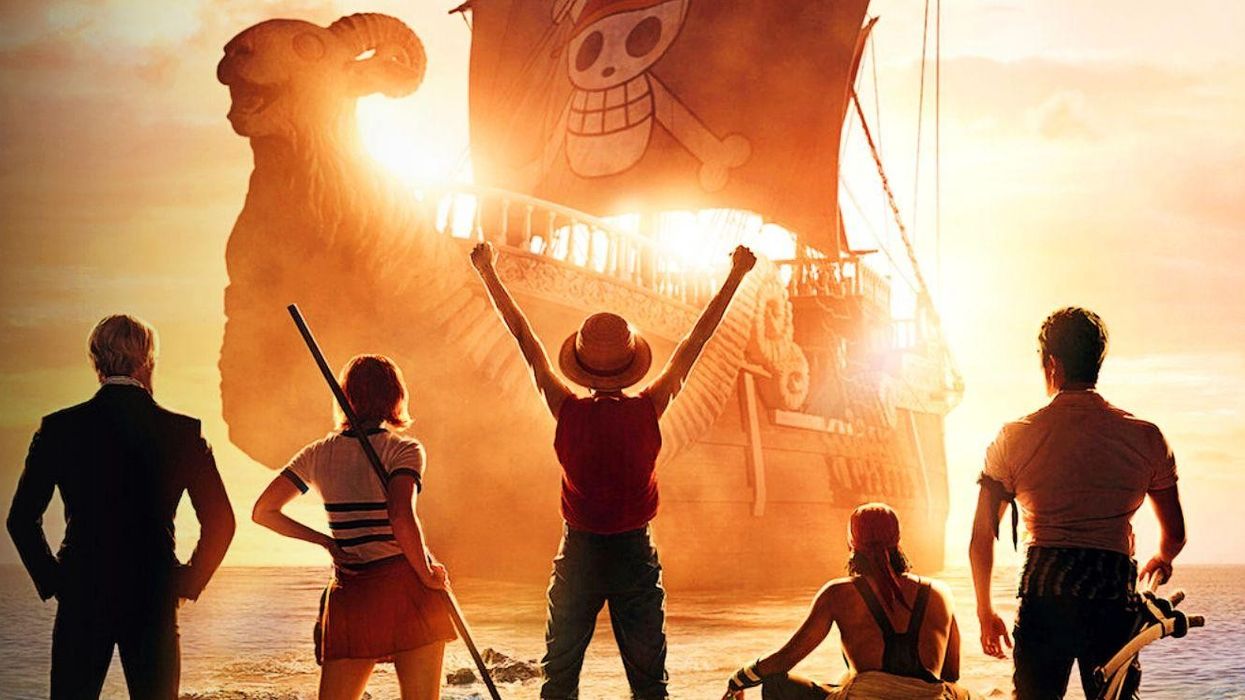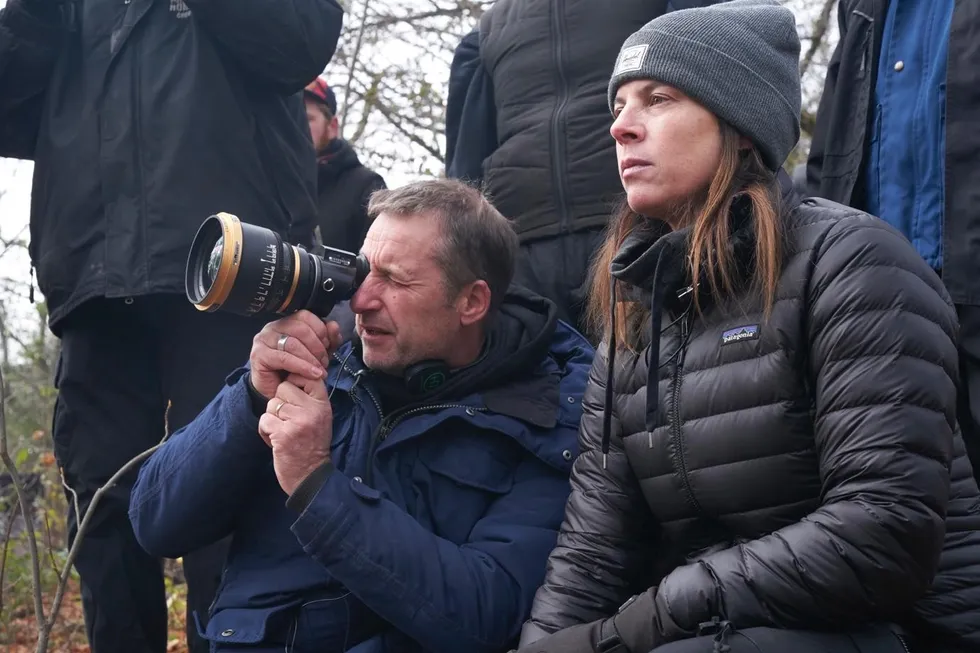How 'One Piece' Was Adapted from Manga to Live-Action
From manga on paper to full throttle live action, this is how Marc Jobst adapted the live-action One Piece series for Netflix.

'One Piece'
This post was written by Marc Jobst.
How do you approach directing the pilot for a live-action adaptation of the biggest-selling manga in the universe? How do you successfully bring a 2-dimensional world into 3 dimensions without losing the riotous freedoms afforded the world of pen and paper? Is it even possible? Or should I just step away and move on to something less problematic?
I like a challenge. The showrunners, Steve Maeda and Matt Owens and their team had written terrific scripts–ambitious, epic, and intimate, with wonderful moments of insight into character, relationship, and the world in which we live, all while respecting the source material.
When I first read the scripts, it felt like the world was hungry for a show like this–one that had warmth, heart, adventure, sunshine, and, above all else, optimism. One Piece is quirky, wild, and quietly profound. That’s why it means so much to the fanbase. Luffy, the lead character, has special rubber skills, but his main gift is to inspire: to say we’re better off together than we are alone; that we must believe in our dreams, and believe in ourselves; that we must support each other in who we are and who we want to be; and be courageous, and search for our own freedoms.
ONE PIECE | Official Teaser Trailer | Netflix
I’m a character and story guy. I don’t consider myself a genre man, or even an action director, even though I’ve directed Marvel Studio shows Daredevil, Luke Cage, and The Punisher, as well as The Witcher. If a story puts a character through the mill, and we follow their twists and turns way to some kind of conclusion, however inconclusive, I’m in.
I started in theatre. All you have is a wide shot–no closeups, no developing shots, no details to cut to. Just one big wide shot. Theatre becomes electric for me when you see actors play authentic characters that stay true to their objective in the story, and, above all else, listen to each other.
At its core that’s how I approached One Piece.In high-end television, the showrunners will have spent months, sometimes years, developing, writing, and selling their show. When I came on board to direct the pilot, I spent a lot of time with the showrunners and writers listening to where the story came from, why they wanted to tell it, and their ideas and visuals. My job is to realize their vision but also to add value to it, bring new ideas, and draw it together to build an overall vision.
I start with character. Who are the characters? What do they want? In worldbuilding shows it’s easy to spend all your time (and money!) building the world, and then dropping your characters into it.
I want to turn that around. I wanted to foreground the characters and set them in an exciting world. I don’t stay with a show because I fall in love with the sets or backgrounds, I stay because I fall in love with the people, and what happens to them.
Fortunately, Oda had already painted vivid back stories for the key characters so we could ground them in identifiable 3-dimensional emotional reality despite their special skills of rubber limbs, bodies that cut up into lots of pieces, or fish people that are both water and land-based. Matt and Steve’s scripts were richly characterful so, front and center of the live-action adaptation of One Piece, would be the actors, grounding the wonderfully crazy characters in real life.
Shooting Style
One Piece is a quirky world. I wanted to reference the framing of Eiichiro Oda’s drawings, whilst not mimicking them. We wanted our version to remain grounded and to complement the manga and anime, not replicate or replace them, each adding to the other.

With DoP Nicole Whittaker
Credit: Netflix
Rather than just show the world - the traditional shooting rhythms of wide shots to show the world, followed by close-ups for reaction and dialogue - I wanted to enter the world with the characters, for the audience to participate in their discoveries, and be on the journey with our crew. That means finding the right camera language to do so. We brought on the brilliant Director of Photography Nicole Whittaker who I’d worked with on the origin story for Mark Millar’s Jupiter’s Legacy. We used beautiful MiniHawk lenses that gave a gorgeous, slightly “otherly” bokeh, with a fall-off like anamorphic lenses. But to realise the manga framing in live action I wanted to go further. Could we find lenses that let us shoot as wide as the lenses Yorgan Lanthimos used on The Favourite, but took out the fisheye bend, and give us super close focus? If we could, we’d be able to stay close to character whilst seeing the worlds they enter at the same time.
Nicole approached Vantage in Germany. They embraced the challenge and developed a set of Large Format MiniHawk lenses specifically for One Piece, that would be used for the very first time. They are brilliant and beautiful, and exciting to work with. They took the fisheye bend out, which allowed us to shoot the whole show predominantly on 8mm, 14mm, and 21mm lenses. This gave us frames that referenced the manga drawings, allowed us to stay close to character, and gave the show a unique look…

Wide shot in 'One Piece'
Credit: Netflix
Action
I wanted to approach the action differently to the Marvel shows, or The Witcher. Their action was visceral, gritty, painful, and bloody. One Piece is more playful. If the Marvel shows were about the punch, One Piece was about the choreography to get to the punch. Henry Cavill in The Witcher is an extraordinary swordsman and I learned, shooting the sword fight for the pilot, that you can see the athleticism and beauty of his skills if you don’t have to cut all the time to cover that you’re using stunt doubles.
For One Piece, therefore, we needed actors who could act, be athletic, and hold a choreography to allow me to shoot with a fluid camera and enjoy the choreography of the fight, flowing from one character to the next–without cutting.
To achieve this, I wanted to dedicate one camera operator solely to learning the action choreography with the actors and stunt performers. Through rehearsal the camera would discover how to shoot the action and be in the right position to land any hits, avoiding the need to cut. It was a big ask, but Netflix saw the benefits of working like that with the success of the pilot sword fight in The Witcher, so were extremely supportive. George Amos, who I’d worked with on Black Sails, became the dedicated fight operator, rehearsing continuously in the dojo with the stunt choreographers Franz Spillhaus and Darrell Maclean, before stepping to shoot on the floor.
'The Witcher'
Credit: Netflix
Rehearsal
We had 4 weeks of rehearsal in Cape Town - where we were shooting. Every morning–in person, or online because of covid restrictions–we’d meet, rehearse, play games, laugh, discuss, eat, and get to know each other. We also spent some time in a local community project both to bond, and to give back to a country that needs so much.
Just before Christmas 2021 our key cast–Luffy (Iñaki Godoy), Nami (Emily Rudd), Zoro (Mackenyu), Sanji (Taz Skylar), and Usopp (Jacob Romero)–stepped out of the makeup truck into the South African sun, in full dress, hair, and makeup, for the first time. When real people step into the shoes of 2-dimensional characters, you never quite know how transferring the look of the drawings will work. We’d spent months auditioning hundreds of actors our casting directors, Junie Lowery-Johnson and Libby Goldstein, had brought us from all over the world. We’d worked on many versions of the costumes designed by the superb Diana Cilliers, and discussed in detail the actors' hair and makeup with Amanda Ross MacDonald. But… when you put it all together and see it on the bodies of real people…
One by one, they stepped out. As casual as we could be, we turned to see.
Wow! At that moment, my shoulders dropped, and I knew we had a show.
We now had the actors who’d bonded together, rehearsed with the stunt and camera team, gained fitness and trust, tested in front of the camera, and were ready to go.
There were times when stepping into some of Richard Bridgland’s huge and stunningly designed sets I felt a long, long way from the first short I made, which led to Eastenders and then several episodes of Casualty and Beyond. But curiously, the work is the same. You go back to the basics of storytelling I learned in theatre. What’s the story? Who are the characters? What do they want?
The first two episodes took 70 days to shoot (normally 25) - a hugely complicated show that was challenging, joyful, sweaty, full of laughter, and very long days.
Now we lift the curtain on our show and invite the audience to enjoy the live-action world of One Piece.
'One Piece'
Credit: Netflix
This post was written by Marc Jobst.
- Film Crew Positions And Why All Jobs on a Movie Set Matter ›
- 'BoJack Horseman': An Inside Look at How the Show Makes Us Cry Over an Animated Horse ›
- What's a One-Pager (and Why Do Producers Want It?) ›
- DP Nicole Hirsch Whitaker on Netflix's 'One Piece' ›
- What is a Wide Shot? | No Film School ›











